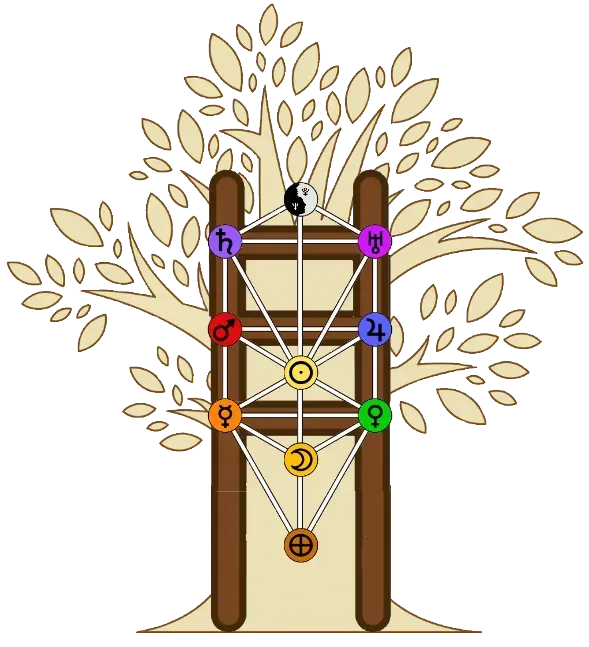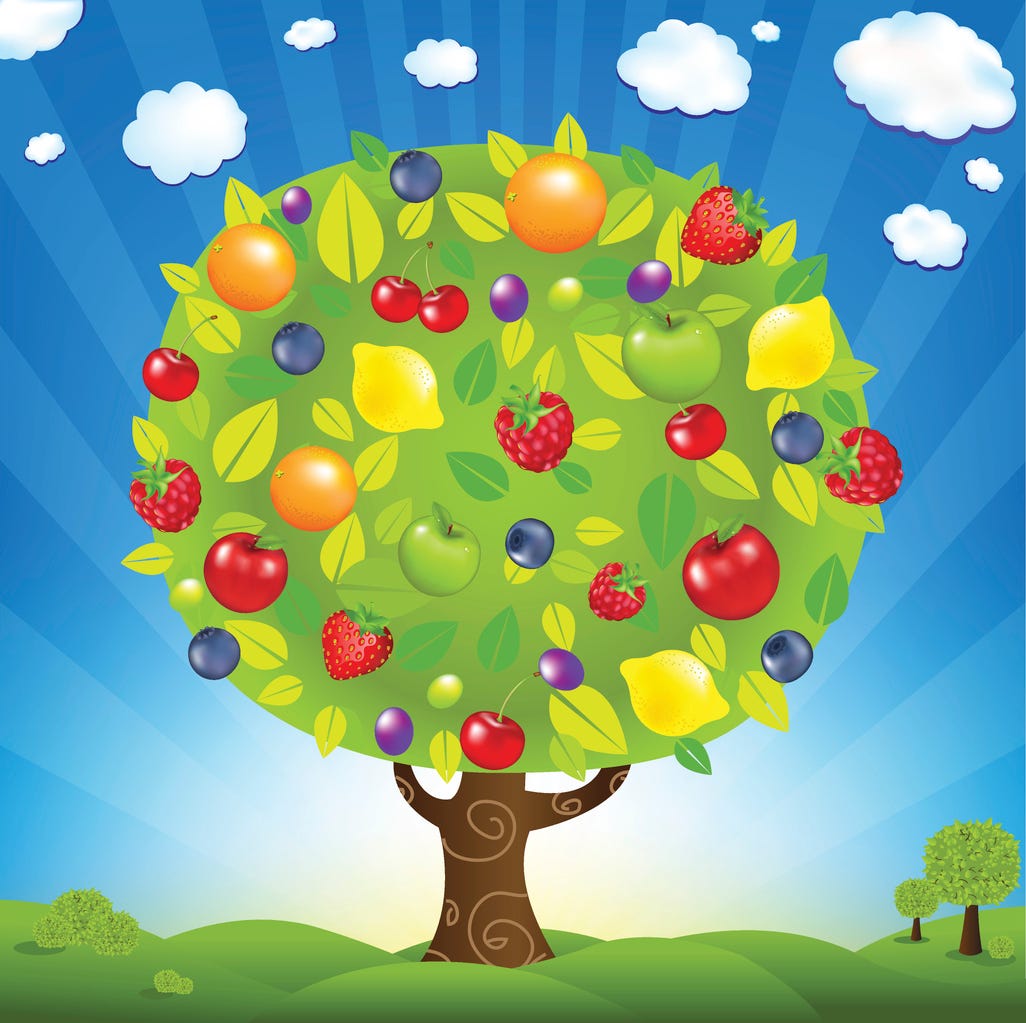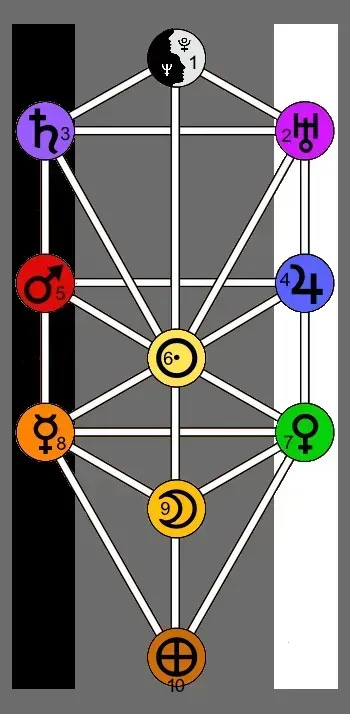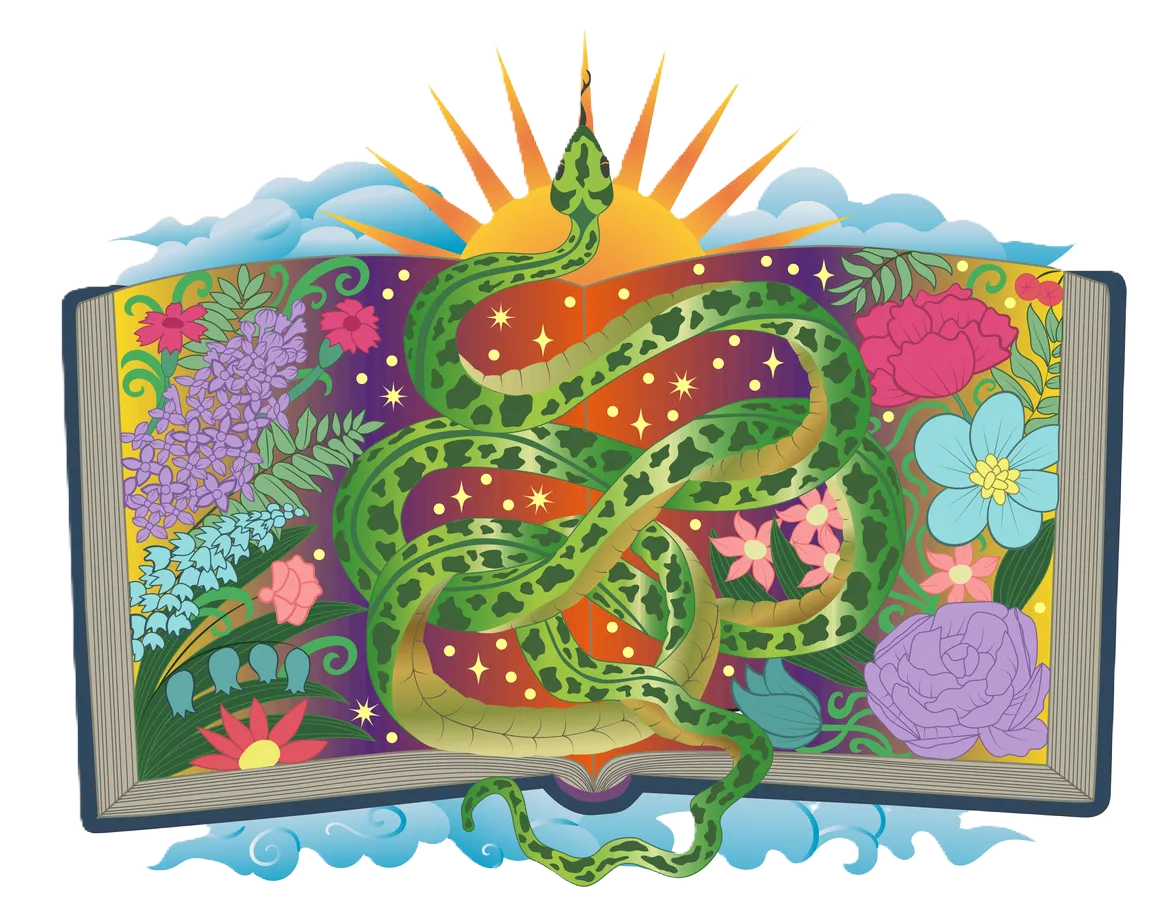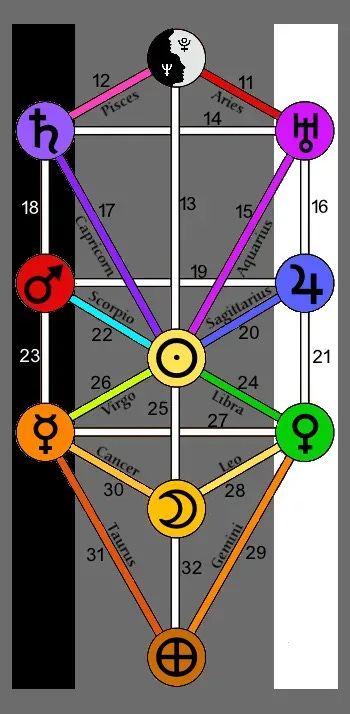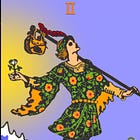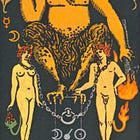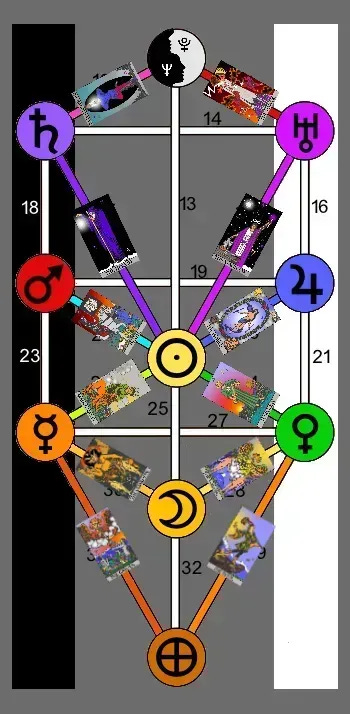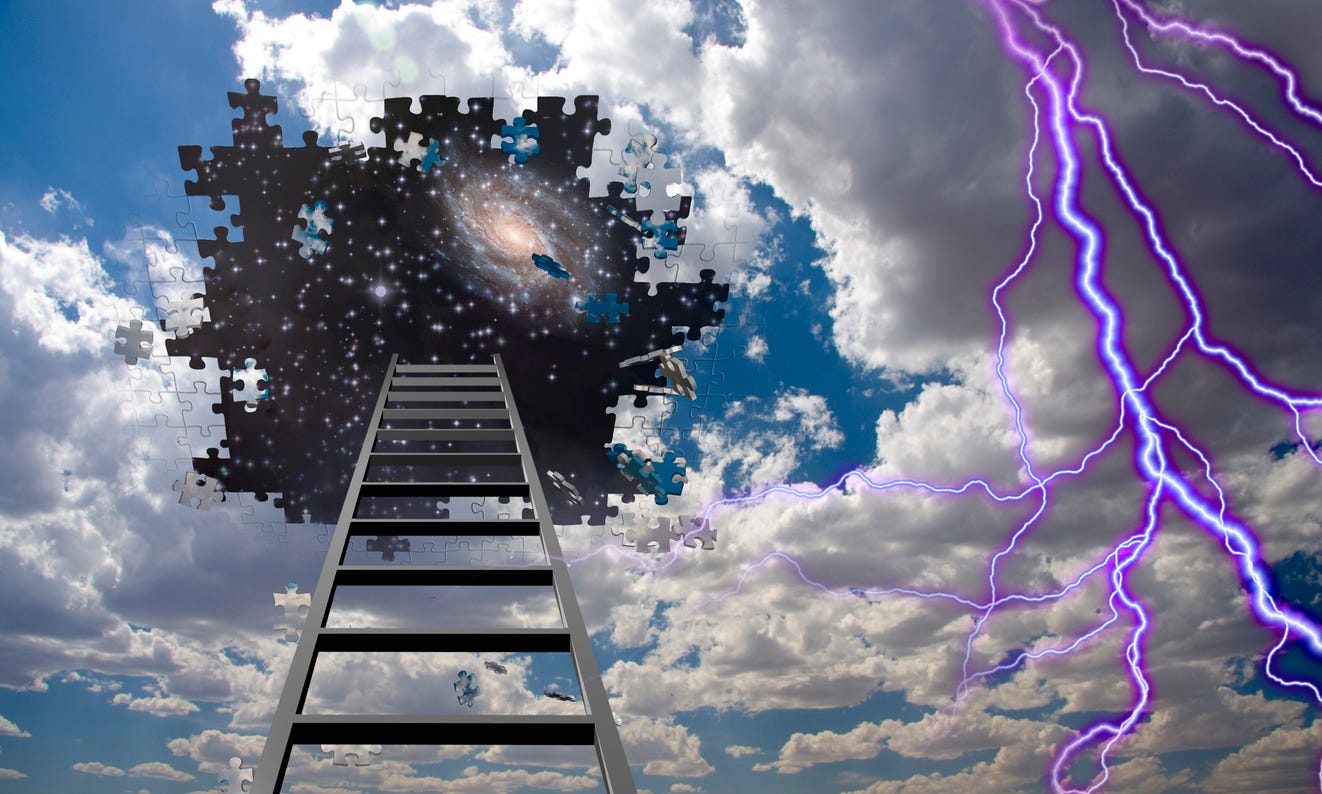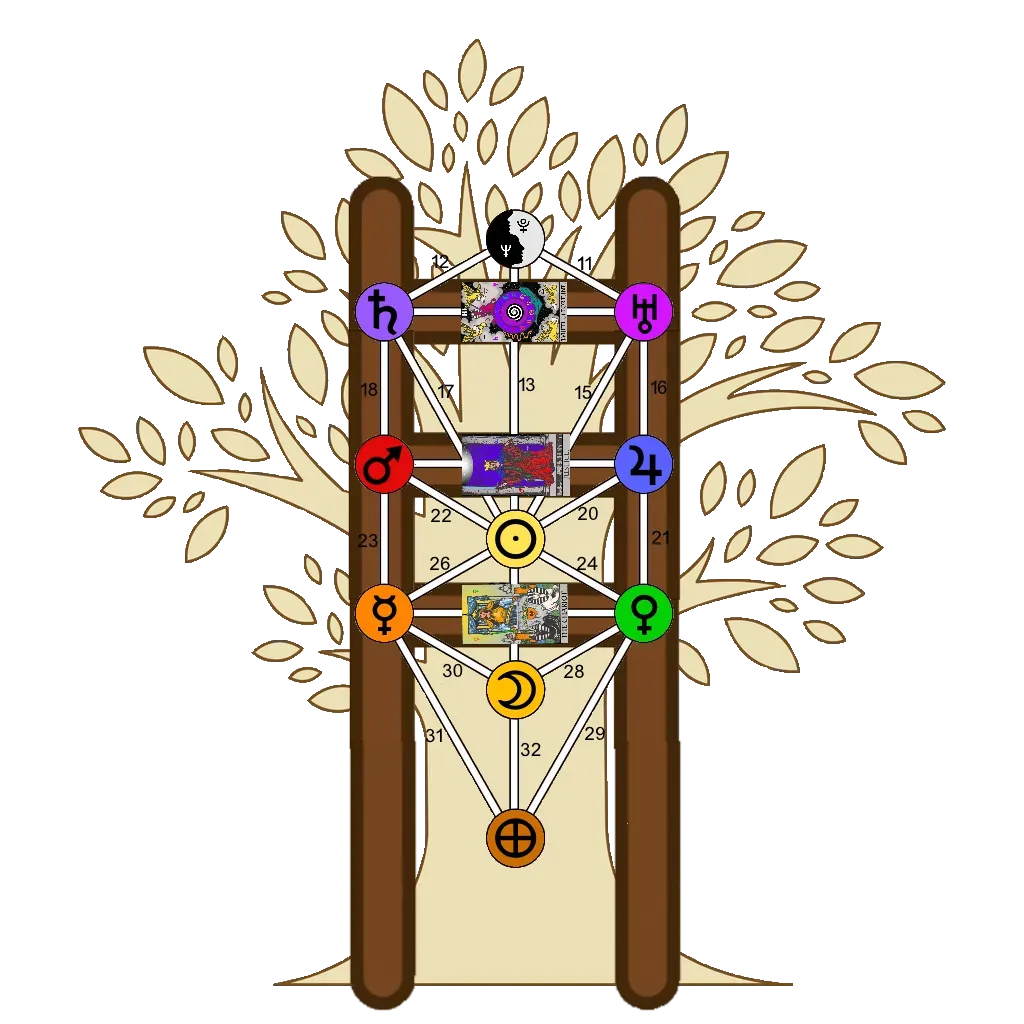The Tree of Life
“Simo Parpola asserted that the concept of a tree of life with different spheres encompassing aspects of reality traces its origins back to the Neo-Assyrian Empire in the ninth century BCE.” — Wikipedia, “Tree of Life”
The Tree of Life in the above illustration is a diagram of fundamental archetypal energies which has evolved through assorted versions over many centuries. This popular version emerged in the 14th century and has been used in various mystical traditions ever since.
"All the most powerful ideas in history go back to archetypes." — Carl Jung
"There are as many archetypes as there are typical situations in life. Endless repetition has engraved these experiences into our psychic constitution, not in the forms of images filled with content, but at first only as forms without content, representing merely the possibility of a certain type of perception and action." — Carl Jung
Though we usually encounter this diagram in the context of one esoteric tradition or another, the basic pattern of the Tree of Life does not belong to any particular culture. The essence of it transcends cultures and is universal, so that anyone might benefit from contemplating it.
Accordingly, people everywhere seem to agree on the basic functions of the formless energies attributed to the spheres on the Tree. However, the same cannot be said of symbols and forms associated with the sphere energies, and especially with the paths that link them on the Tree. All kinds of additional correspondences have been ‘grafted’ onto the Tree according to the beliefs and teachings of the traditions and individuals using it. Individuals speculate freely about appropriate correspondences to the paths, yielding a variety of theories.
In my view, there is no need for membership in any formal mystical tradition in order to interpret the Tree of Life and find profound meaning in it. To know the planetary energies (which not everyone does) is to know the spheres on the Tree from whence all else on it is derived. Interpretation of any path begins with the combined meanings of the two spheres that it connects. Beyond that, the Zodiac and the tarot give us all the symbolic language we need for a clear and meaningful interpretation of the whole Tree.
This mystical diagram is rich in meaning, not to be understood all at once, but through periodic contemplation, organically. At first one sees distinct archetypes, then connections among them; in time the whole map comes to life in one’s mind, an inner reality to be explored at will as if it were a dream. ‘There’ our intuition lets us discover more of what we already know about life than we ever realized we knew. Not only is it fun, but it offers lasting benefits:
a satisfying orientation to reality so that we never need to feel “lost”
a way of keeping things in perspective no matter what happens, rather than sometimes feeling confused and overwhelmed
The Tree of Life truly is mystical, but not because it’s too esoteric for an ordinary seeker to understand, as some seem to believe. It’s mystical because, with repeated contemplation, it really evokes natural intuition and yields progressively deeper insights into the human life that we all live.
In this series, we view astrology and tarot as elegantly combined to the enhancement of both in the Tree of Life, which is comprised of three parts:
The Colorful Fruits (the spheres)
The Storytelling Serpent (the diagonal paths)
The Ladder to the Stars (the vertical & horizontal paths)
An interpretation of a tarot card belonging to the Ladder is featured each month.
The Colorful Fruits
The ‘fruits’ on the Tree are the 10 spheres. There is general agreement as to their correspondences with the planets and with most of the sphere colors. The outer planets (Uranus, Neptune and Pluto) had not yet been discovered in the 14th century, but the existence of similar energies was intuited, and spheres with descriptions appropriate to those planets were included on the Tree.
Here’s a closer view of the spheres/planetary powers as they appear on the basic Tree:
The more powerful collective outer planets correspond to the upper spheres, while the less powerful personal planets correspond to the lower ones, closer to the Earth. Halfway up the Tree are the “social” influences involved in issues of conflict and justice.
The planets/spheres on the Tree are numbered in order of strength from the top down, 1 being the most powerful and 10 being the least. Life manifests through them in sequence from 1 down to 10 (the “Lightning Path”); consciousness then develops more slowly in reverse sequence from 10 up to 1 (the “Serpent Path”).
The 10 planetary influences and their numbers correspond to the numbered cards of the Minor Arcana in the tarot, which portray examples of their effects.
The positions of the spheres on the Tree tell us more about the relationships of the ten energies to one another. Overall, Saturn, Mars, and Mercury are said to comprise energies oriented to the challenges of physical life on the black “Pillar of Severity”, while Uranus, Jupiter, and Venus encourage expansion of experience through opportunities and rewards on the white “Pillar of Mercy”. The general effect is that of “bad cop/good cop”.
On the “Middle Pillar” between the two, human consciousness learns to keep the Black and White extremes in balance, neither too “severe” and controlling nor too “merciful” and lax, in order to live wisely and well.
As it develops, consciousness ‘rises’, or ‘ascends’ up the Center, growing progressively ‘brighter’ through mastery of states marked by the lights of the Earth, the Moon, the Sun, and Neptune/Pluto.
"Colors express the main psychic functions of man." ~ Carl Jung
The planetary spheres on the Tree are the very same energies that are described in the Pantheon of Colors series here at Elixir, listed below with their numbers on the Tree. To read a published post about any planet and the 4 tarot cards associated with it, click on its Pantheon link:
NEPTUNE (Black) = Concealing, Mystery, Imagination, Illusion, Intoxication. Modern ruler of Pisces (and Sagittarius?). Minor Arcana Aces.
PLUTO (White) = Revealing, Penetration, Detoxification. Modern ruler of Scorpio and Aries.
URANUS (Purple) = Creativity, Individuality. Ruler of Aquarius. Minor Arcana Twos.
SATURN (Violet) = Gravity, Contraction, Boundaries, Commitment to Time, Burdens & Delays, Duty, Fate. Ruler of Capricorn. Minor Arcana Threes.
JUPITER (Blue) = Wisdom, Confidence, Humor, Expansion, Lightness. Classic Ruler of Sagittarius and Pisces. Minor Arcana Fours.
MARS (Red) = Desire, Assertiveness, Physical Strength & Speed. Classic ruler of Scorpio and Aries. Minor Arcana Fives.
THE SUN (Yellow) = Ego Awareness, Honor, Balance. Ruler of Leo. Minor Arcana Sixes.
VENUS (Green) = Beauty, Harmony, Aesthetic Sensitivity. Ruler of Taurus and Libra. Minor Arcana Sevens.
MERCURY (Orange) = Knowledge, Efficiency, Attention to Details. Ruler of Gemini and Virgo. Minor Arcana Eights.
THE MOON (Amber) = Feeling, Memory, ‘Programming’, Habit. Ruler of Cancer. Minor Arcana Nines.
THE EARTH (Brown) = Current Established Reality. No rulership. Minor Arcana Tens.
The Storytelling Serpent
“The snake, or serpent, is one of the most symbolically significant animals in literature, religion, and mythology. Although many people associate the snake with sinister and even downright evil connotations, in reality the symbolism of the serpent is far more ambiguous and wide-ranging than this.”
— Dr Oliver Tearle (Loughborough University), “The Curious Symbolism of Snakes in Literature and Myth”
In the context of the Tree of Life, the Serpent is a metaphor for Time and Space.
The ancient symbol of the Ouroboros expresses the cyclical nature of time, as does the Zodiac and Joseph Campbell’s Monomyth (the Hero’s Journey), both of which tell the universal story of human experience and inner development through time.
Below we see the Ouroboros coiled around circular diagrams of the Zodiac and of tarot images associated with the Monomyth. Its rope-like appearance emphasizes our being bound to time and space throughout our lifetime on earth. The place in the cycle where head bites tail is where a life renews itself, taking only unlearned lessons remaining from the old cycle into the new one.

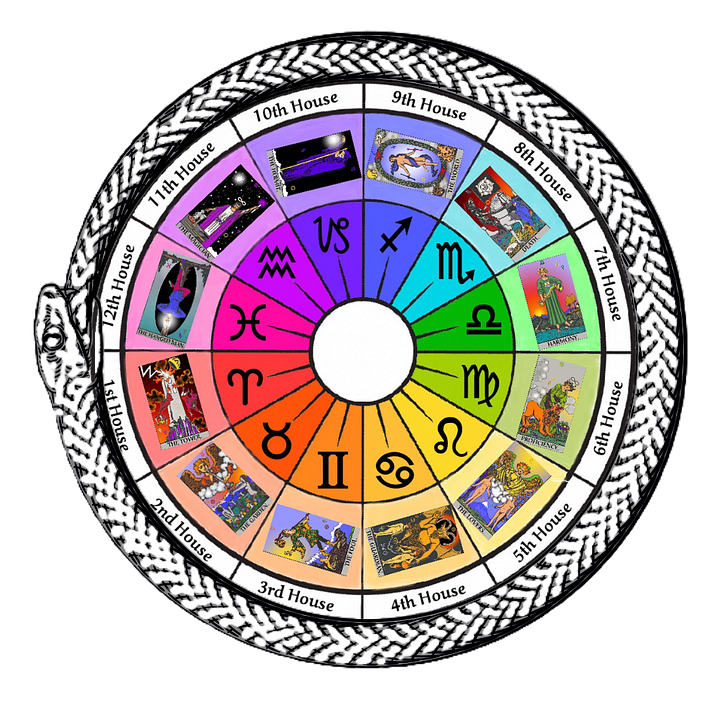
This very same serpent appears unwound as the diagonal paths on the Tree of Life, allowing for further symbolism alluding to the gradual shift of our consciousness towards the timeless Center as we improvise our way spiralwise through our story.
Life is said to manifest, or “emanate”, from the top down in a “Lightning Flash”, while human awareness develops from the bottom up as we ‘climb’ the diagonal segments of the “Serpent Path” through time towards reunion with our Source.
See in the diagram below how the Zodiac unfolds in sequence up the 12 diagonal paths of the Tree. The 6 “feminine” (Earth & Water) signs are all on the left side; the 6 “masculine” (Air & Fire) signs are all on the right. Thus the serpent “slithers” up the Tree in alternating sign genders, a pendulum-like motion that brings progressively difficult “bad cop/good cop” challenges from increasingly powerful archetypes as we climb.
The Quest for the Elixir series tells of the Hero’s Journey we take on the Serpent Path in greater detail.
Each month we celebrate the segment of the Journey corresponding to the current Sun sign. To learn more about (or to review) the part of the story we are celebrating now, find the current Sun sign in the list below and click on its Quest post:
The Path of The Garden = TAURUS = the 31st Path (between the Earth and Mercury). Life emerges from a seed or womb (Earth) to behold the various details (Mercury) of a new world.
The Path of The Fool = GEMINI = the 29th Path (between the Earth and
Venus). Exploration of the immediate environment.
The Path of The Guardian = CANCER = the 30th Path (between the Moon and Mercury)
The Path of The Lovers = LEO = the 28th Path (between the Moon and Venus)
The Path of Proficiency = VIRGO = the 26th Path (between the Sun and Mercury)
The Path of Harmony = LIBRA = the 24th Path (between the Sun and Venus)
The Path of Death = SCORPIO = the 22nd Path (between Mars and the Sun)
The Path of The World = SAGITTARIUS = the 20th Path (between Jupiter and the Sun)
The Path of The Hermit = CAPRICORN - the 17th Path (between Saturn and the Sun)
The Path of The Magician = AQUARIUS = the 15th Path (between Uranus and the Sun)
Here’s the way the Major Arcana cards associated with the universal story appear on the diagonal paths of the Tree:
The Ladder to the Stars
The ladder on each of the Tree images below highlights the 10 vertical and horizontal paths on the Tree of Life. They are not segments of the Hero’s Journey, but rather are ‘signposts’ of inner development along the way up the Tree. 4 of them are associated with influences of the 4 Elements, 3 of them with states of consciousness, and 3 with transitions from one stage of life to another. Like the 12 phases of the Journey, they have correspondences in the Major Arcana of the tarot.
The rails of the ladder are like the black and white pillars mentioned above. On them are the paths related to the 4 Elements.
The Left Rail
This is the “feminine” rail of forms, both imaginary (Water) and physical (Earth).
The Watery Path of The High Priestess is the 18th Path (between Saturn and Mars), The Witch of Fate.
The Earthy Path of The Empress is the 23rd Path (between Mars and Mercury), Mother Nature. Desire for physical life (Mars) connects with the skills needed to raise and maintain it (Mercury).
The Right Rail
This is the “masculine” rail of forces, both spiritual (Fire) and mental (Air).
The Fiery Path of The High Priest is the 16th Path (between Uranus and Jupiter), The Wizard of Free Will.
The Airy Path of The Emperor is on the 21st Path (between Jupiter and Venus), Father Culture. Beliefs about life (Jupiter) connect with society and the arts (Venus).
The 3 Rungs
The rungs are all transitions, steps up from one stage of life to another.
The Path of The Chariot is the 27th Path (between Mercury and Venus), Coming of Age.
The Path of Justice is the 19th Path (between Mars and Jupiter), Initiation.
The Path of The Wheel of Fortune is the 14th Path (between Saturn and Uranus), Destiny.
The Ascent
The ascent up the center of the Tree is the straight route consciousness takes, as in stages it grows brighter in response to experience.
The Path of The Moon is the 32nd Path (between the Earth and the Moon), Childhood.
The Path of The Sun is the 25th Path (between the Moon and the Sun), Adulthood.
The Path of The Star is the 13th Path (between the Sun and Neptune/Pluto), Elderhood.
The Emperor, or Father Culture
on the Lower Right Rail, the Airy 21st Path (between Jupiter and Venus)
Beliefs about life (Jupiter) connect with society and the arts (Venus).
High above a city, a mature man sits on the hard seat of an unadorned stone throne. He occupies an elevated position of power on earth, where facts are what they are and must be dealt with realistically.
The two colors of the Emperor’s outer garments reflect his function in life. On his shoulders is a mantle of blue, like the clear, peaceful sky above the entire scene. His gown is green, like the leaves of the flowers blooming at his feet in the foreground. The ankh-like sceptre in his right hand and the orb in his left hand express the same symbolism: the beliefs about life (Fire) held by the society to which he is accountable, and the material world (Earth) where he would see them reflected. He can perceive both and facilitate connection between them through the use of his human mind (Air).
The Emperor is a partner to the Empress, who brings life into the natural world and nurtures it physically, from the bounty of her fertile garden. His complementary function is about the refining influence of mental and social nurture. He presides over a peaceful community where, inspired by a higher power, life is enriched by human thought, and individuals can acquire useful knowledge and prosperity, enjoy and contribute to the arts, socialize, and generally cooperate to everyone’s benefit. In other words, he is a personification of human civilization and culture.
Beneath the Emperor’s outer garments he is wearing a suit of armor. Though not young, he is fit and fully prepared to defend his people and territory, should any harm threaten them. But the crown on his head is solid and protective, and there is a sky-blue gem on each of its facets. It’s not war that the Emperor has on his mind, but rather continued peace and wise governance.


In two of the earliest tarot decks, the Visconti-Sforza tarot and the tarot of Marseilles (above), The Emperor appears as simply a regal figure seated on a throne. Centuries later, the designer of the Rider-Waite tarot added Aries symbolism to The Emperor, apparently seeing him as an aggressive conquering warrior. In my view the Emperor’s main quality is not conquest, but intelligence, inspired by wisdom and benevolence. The Waite-based image of him that I use is modified accordingly, so that he appears capable of defense, but no more warlike than his early images.
So what does this intelligent Emperor know that makes him such a wise ruler of a contented civilization?
C.G. Jung tells us of the wisdom of maintaining respect for nature, however sophisticated the culture may be.
"Too much of the animal disfigures the civilized human being, too much culture makes a sick animal." — Carl Jung
Though education involves differentiation from the common animal level of life, there is danger in the arrogance of turning against that simpler level and rejecting it as “inferior”.
"The educated man tries to repress the inferior one in himself, without realizing that by this he forces the latter to become revolutionary." — Carl Jung
The danger is that, whether within a society or within a human personality, nature may be tamed to some extent, but it will not be denied. Not only would an attempt to divorce ourselves from nature not work; it would be an invitation to a destructive backlash when rejected natural energies demand recognition through rebellion.
"The facts of nature cannot in the long run be violated. Penetrating and seeping through everything like water, they will undermine any system that fails to take account of them, and sooner or later they will bring about its downfall. But an authority wise enough in its statesmanship to give sufficient free play to nature - of which spirit is a part - need fear no premature decline." — Carl Jung
Joseph Campbell offers words of wisdom about the effects of education.
“The job of an educator is to teach students to see vitality in themselves” ― Joseph Campbell
At its best, education does just that, to the benefit of both individuals and their society. But where education serves the state without regard for fulfillment of its individual citizens, it tends to impose requirements that stifle or distort natural authenticity (and therefore quality of performance) instead of drawing them out.
“It's not an advantage to be without a PhD. But it's an advantage not to have taken a PhD because of the things that they do to you to get you into the slot that they want you in.” ― Joseph Campbell, The Hero's Journey: Joseph Campbell on His Life & Work
Of the spirituality that inspires a culture, Campbell makes many observations, including the following:
“The rise and fall of civilizations in the long, broad course of history can be seen to have been largely a function of the integrity and cogency of their supporting canons of myth; for not authority but aspiration is the motivator, builder, and transformer of civilization.” ― Joseph Campbell
The religious traditions and stories told within a culture have always served to inspire and guide its people. But ease of travel and communication has made the world ‘smaller’, and cultures are no longer as separate and discrete as they were in the past.
"There are now no more horizons. And with the dissolution of horizons we have experienced and are experiencing collisions, terrific collisions, not only of peoples but also of their mythologies. It is as when dividing panels are withdrawn from between chambers of very hot and very cold airs: there is a rush of these forces together." — Joseph Campbell
"A schism in the body social, will not be resolved by any scheme of a return to the good old days (archaism), or by programs guaranteed to render an ideal projected future (futurism), or even by the most realistic, hardheaded work to weld together again the deteriorating elements. Only birth can conquer death -- the birth, not of the old thing again, but of something new." — Joseph Campbell
What to do for inspiration in our changing world? That’s not a matter for human control, but for receptivity to the influence of a Higher Power. Campbell points out the futility of any attempt at artificial construction of a source that, by definition, transcends thought itself. He assures us that a new inspirational myth, appropriate to current times, will always emerge spontaneously, through human intuition, to replace an older one that no longer inspires the people.
"In the field of consciousness research-and also in physics and astronomy-we are breaking past the cause-and-effect, mechanistic way of interpreting things. In the biological sciences, there is a vitalism coming in that goes much further toward positing a common universal consciousness of which our brain is simply an organ. Consciousness does not come from the brain. The brain is an organ of consciousness. It focuses consciousness and pulls it in and directs it through a time and space field. But the antecedent of that is the universal consciousness of which we are all just a part." — Joseph Campbell
And so the Emperor focuses his thoughts and efforts on his society’s current interpretations of universal consciousness, and also on the flourishing of culture in a civilization whose citizens are naturally healthy and productive because their spirits are inspired.
In divination, I read The Emperor as a positive situation or institution that supports both nature and human culture. He is a source of education and peaceful civilization, especially through spirituality and the arts.
If it’s reversed, I read it as a situation or institution degraded by some form of social corruption. There may be denial or disregard of natural or spiritual laws, so that affected people are discouraged or prevented from realizing their potentials.





